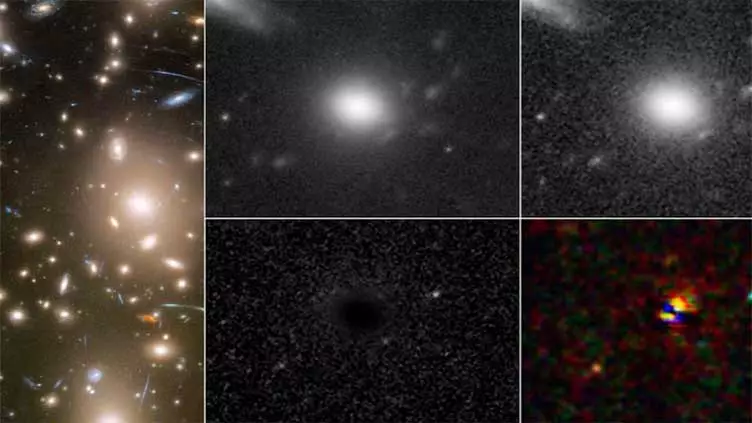WASHINGTON, Nov 11(ABC): About 11.5 billion years ago, a distant star roughly 530 times larger than our sun died in a cataclysmic explosion that blew its outer layers of gas into the surrounding cosmos, a supernova documented by astronomers in blow-by-blow detail.
Researchers on Wednesday said NASA’s Hubble Space Telescope managed to capture three separate images spanning a period of eight days starting just hours after the detonation – an achievement even more noteworthy considering how long ago and far away it occurred.
The images were discovered in a review of Hubble observation archival data from 2010, according to astronomer Wenlei Chen, a University of Minnesota postdoctoral researcher and lead author of the study published in the journal Nature.
They offered the first glimpse of a supernova cooling rapidly after the initial explosion in a single set of images and the first in-depth look at a supernova so early in the universe’s history, when it was less than a fifth its current age.
“The supernova is expanding and cooling, so its color evolves from a hot blue to a cool red,” University of Minnesota astronomy professor and study co-author Patrick Kelly said.
The doomed star, a type called a red supergiant, resided in a dwarf galaxy and exploded at the end of its relatively brief life span.
“Red supergiants are luminous, massive and large stars, but they are much cooler than most of the other massive stars – that is why they are red,” Chen said. “After a red supergiant exhausts the fusion energy in its core, a core collapse will occur and the supernova explosion will then blast away the star’s outer layers – its hydrogen envelope.”
The first image, from about six hours after the initial blast, shows the explosion as starting relatively small and fiercely hot – about 180,000 degrees Fahrenheit (100,000 degrees Kelvin/99,725 degrees Celsius).
The second image is from about two days later and the third from about six days after that. In these two images, the gaseous material ejected from the star is seen expanding outward. In the second image, the explosion is only a fifth as hot as in the first one. In the third image, it is only a tenth as hot as the first.
The remnant of the exploded star most likely became an incredibly dense object called a neutron star, Chen said.
A phenomenon called strong gravitational lensing accounts for how Hubble was able to obtain three images at different points in time after the explosion. The tremendous gravitational power exerted by a galaxy cluster located in front of the exploding star from the perspective of Earth served as a lens – bending and magnifying the light emanating from the supernova.
“The gravity in the galaxy cluster not only bends the light from behind it, but also delays the light travel time because the stronger the gravity, the slower a clock moves,” Chen said. “In other words, emission of light from a single source behind the lens can go through multiple paths toward us, and we then see multiple images of the source.”

